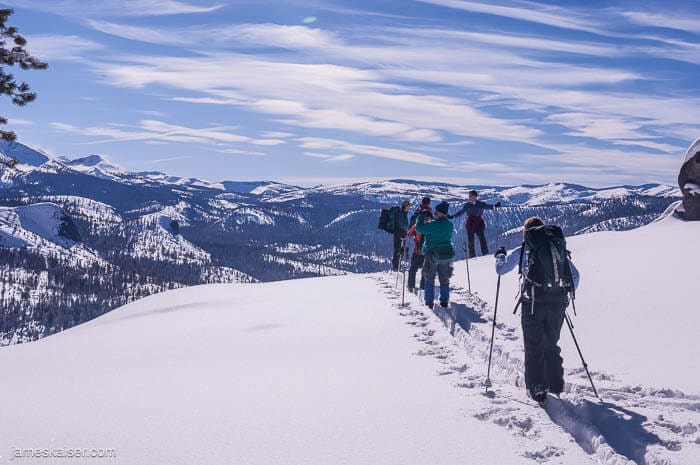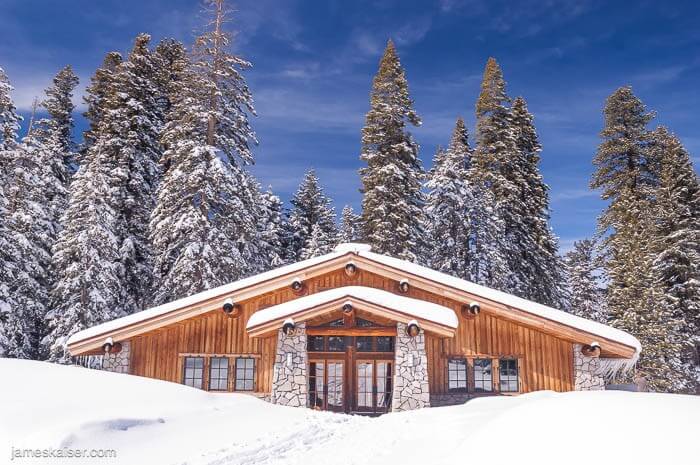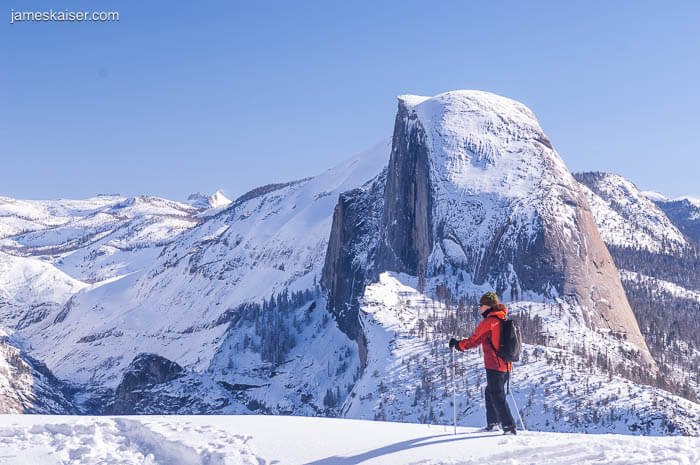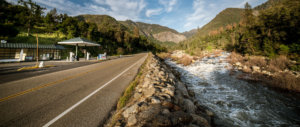
It’s winter in Yosemite Valley. The crowds are gone, the roads are empty, and a fresh layer of snow covers the ground. Pine trees and meadows are cloaked in white. Faint clouds swirl around towering granite cliffs. The view from the valley is stunning, but the view I’m enjoying from Glacier Point is beyond belief.
Perched three thousand feet above Yosemite Valley, Glacier Point offers, arguably, the most stunning panorama in Yosemite National Park. To the west: Yosemite Falls, the tallest waterfall in North America. To the east: Half Dome, a startling rock formation””smooth and round on one side, terrifying and vertical on the other””that rises 1,600 feet higher than Glacier Point. Lying between is a vast expanse of gorgeous alpine scenery.
On busy summer afternoons Glacier Point attracts thousands of visitors. Today there are just nine of us here””and for the next two days we’ll have Glacier Point all to ourselves. Although the road to Glacier Point closes each winter due to heavy snow, you can still access the viewpoint with a pair of cross country skis. Plan in advance and you can also book accommodations at the cozy Glacier Point Ski Hut, which is what our group has done.
The adventure starts at the Badger Pass Ski Area, the furthest accessible point on Glacier Point Road in winter. From there it’s a 10.5-mile glide along intermediate, rolling terrain””about four to five hours, on average. You can ski the trail on your own, but we opted for a guided tour, which proved helpful when it started to snow. By the time we arrived at Glacier Point, there were no views, just a wall of white, so we headed straight to the hut.

Set back a few hundred feet from the viewpoint, Glacier Point Ski Hut is a rustic lodge built in grand “parkitecture” style. In summer it serves as the Glacier Point gift shop. At the end of the tourist season, however, it undergoes a remarkable transformation. Book shelves and clothing racks are replaced with couches and bunk beds. When skiers arrive, a wood-burning stove keeps them warm. Guides cook hearty meals in the kitchen, and there’s a steady supply of hot chocolate on tap. This reverse-hibernation brings out the building’s true charm. As we peel off ski clothes and lounge by the fire, a sense of exhausted contentedness settles over the room. After dinner and board games, we call it an early night.
Venturing out the next morning, we’re greeted with crisp air and deep blue skies. Fresh snow sparkles in every direction. Sierra sunshine lights up mountain views that extend to the crest of the range. Dominating the skyline, rising above all else, is Half Dome, now draped in a glistening white veil.
I’ve experienced this view many times before. Normally, I’m surrounded by hundreds of tourists. Even in the biggest crowds, the commotion often melts away as the scenery pulls you closer. Now, standing on the edge of Yosemite Valley after a winter storm, surrounded by nothing but silence, I’m experiencing something else entirely: Glacier Point at its most elemental.
We return to the hut for breakfast, then spend the rest of the day skiing to other nearby viewpoints. Each offers a similar sense of wonder. We’ve all been to these places before, but seeing them now, on a beautiful winter day, feels like experiencing them for the first time.

The next morning, before gearing up to ski back, we step outside to enjoy the views one last time. Staring over the landscape John Muir called the “sanctum sanctorum” of the Sierras, it’s hard to believe more people aren’t interested in exerting a bit of physical energy to experience something this sublime. But for the rest of us, I suppose, that’s a good thing.
James Kaiser is the author of the bestselling guidebook “Yosemite: The Complete Guide”
James Kaiser
Facebook: https://www.facebook.com/JamesKaiserTraveler
Instagram: https://www.instagram.com/jameskaiser_
Pinterest: https://www.pinterest.com/jameskaiser77



